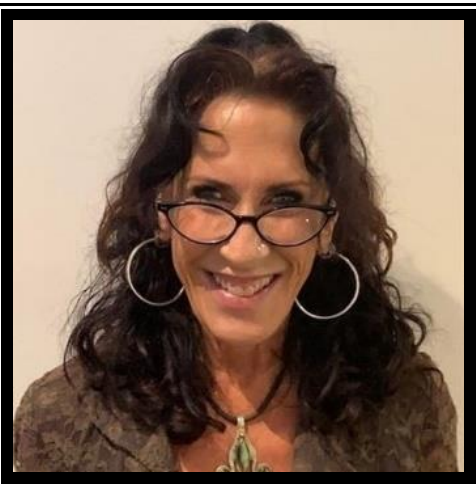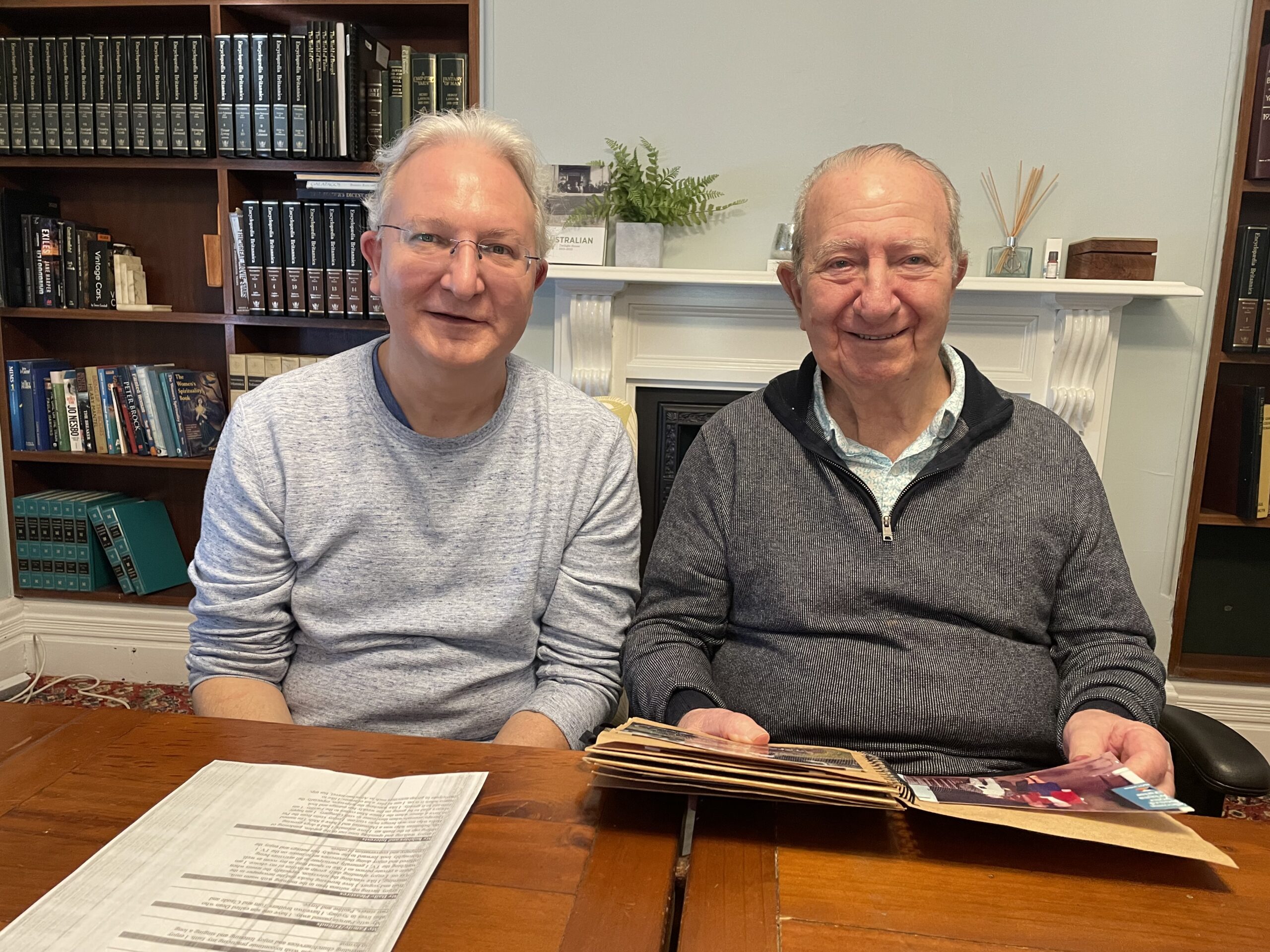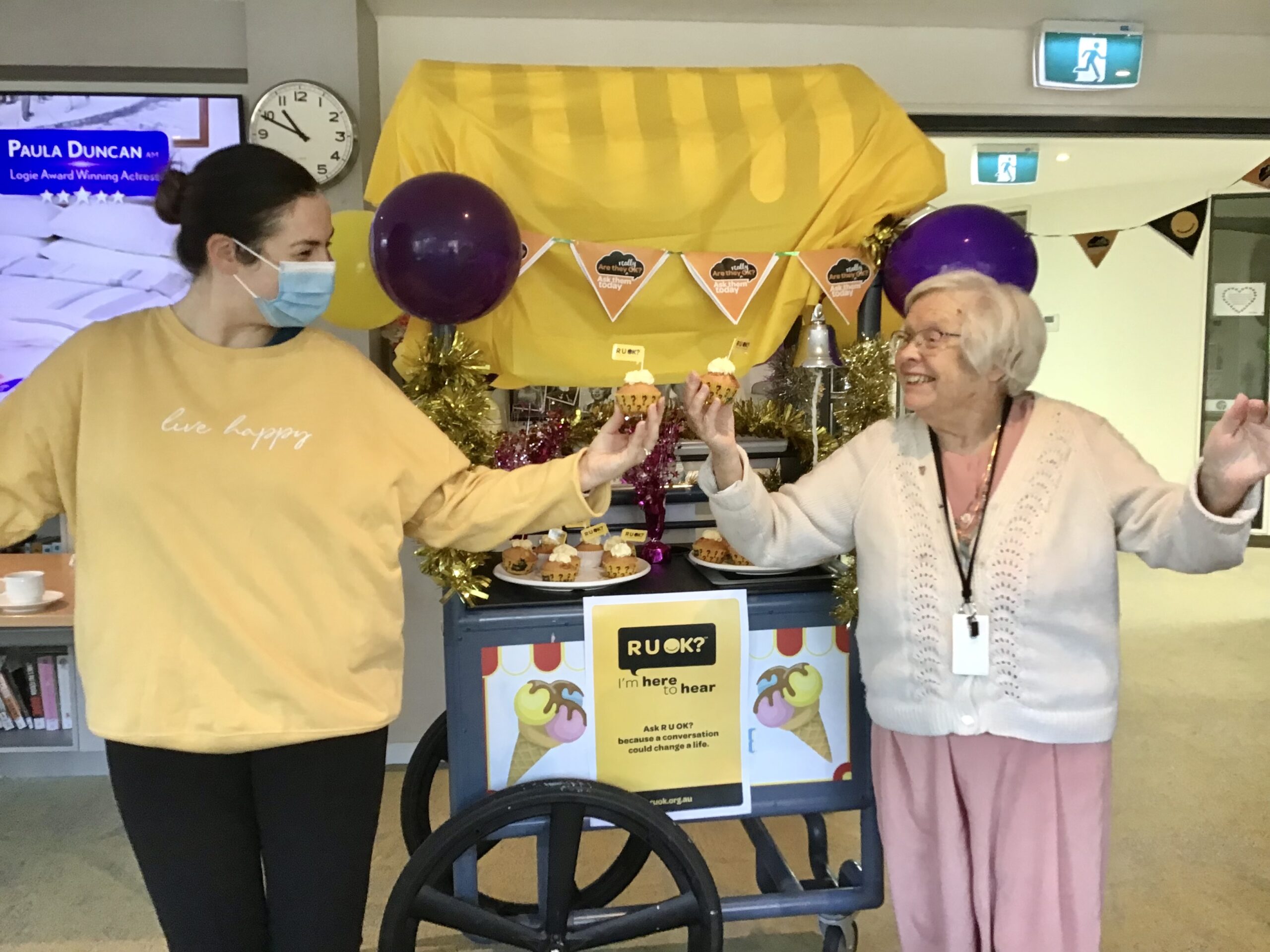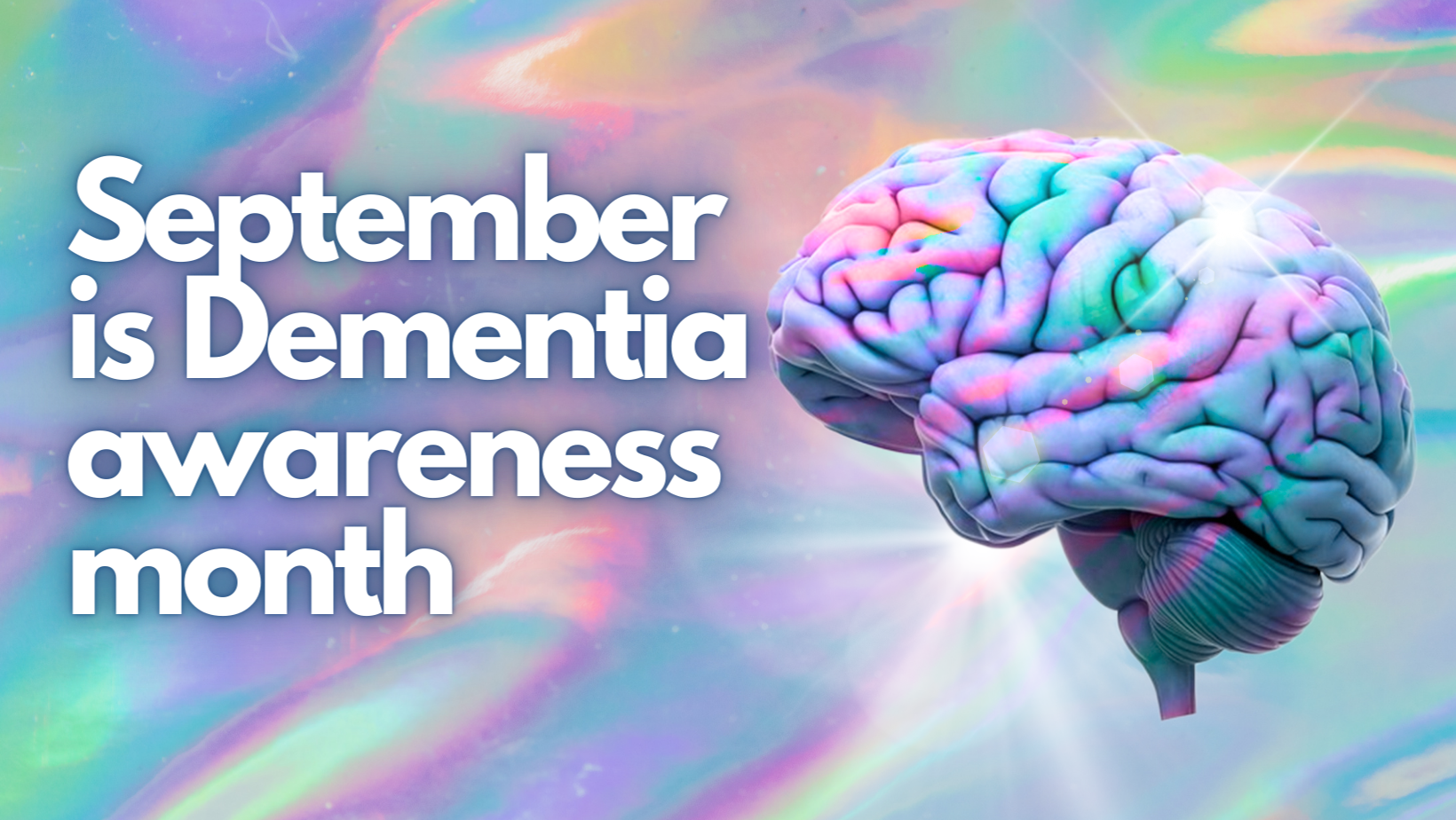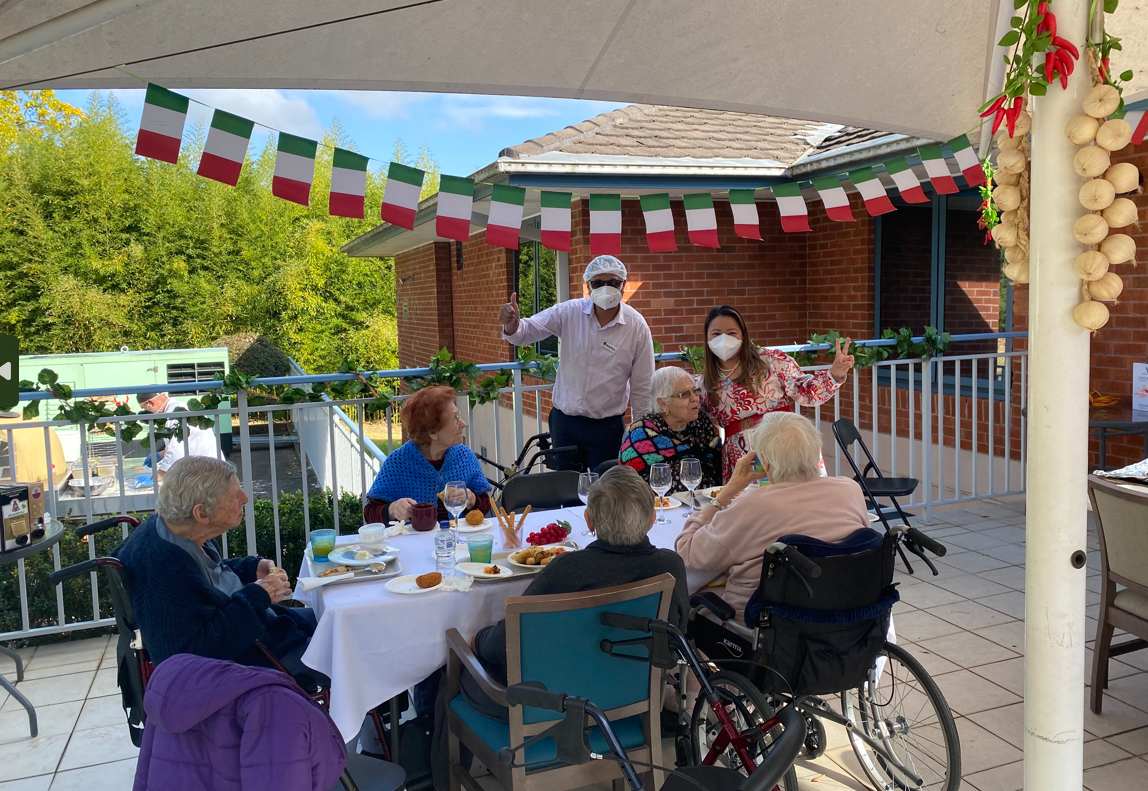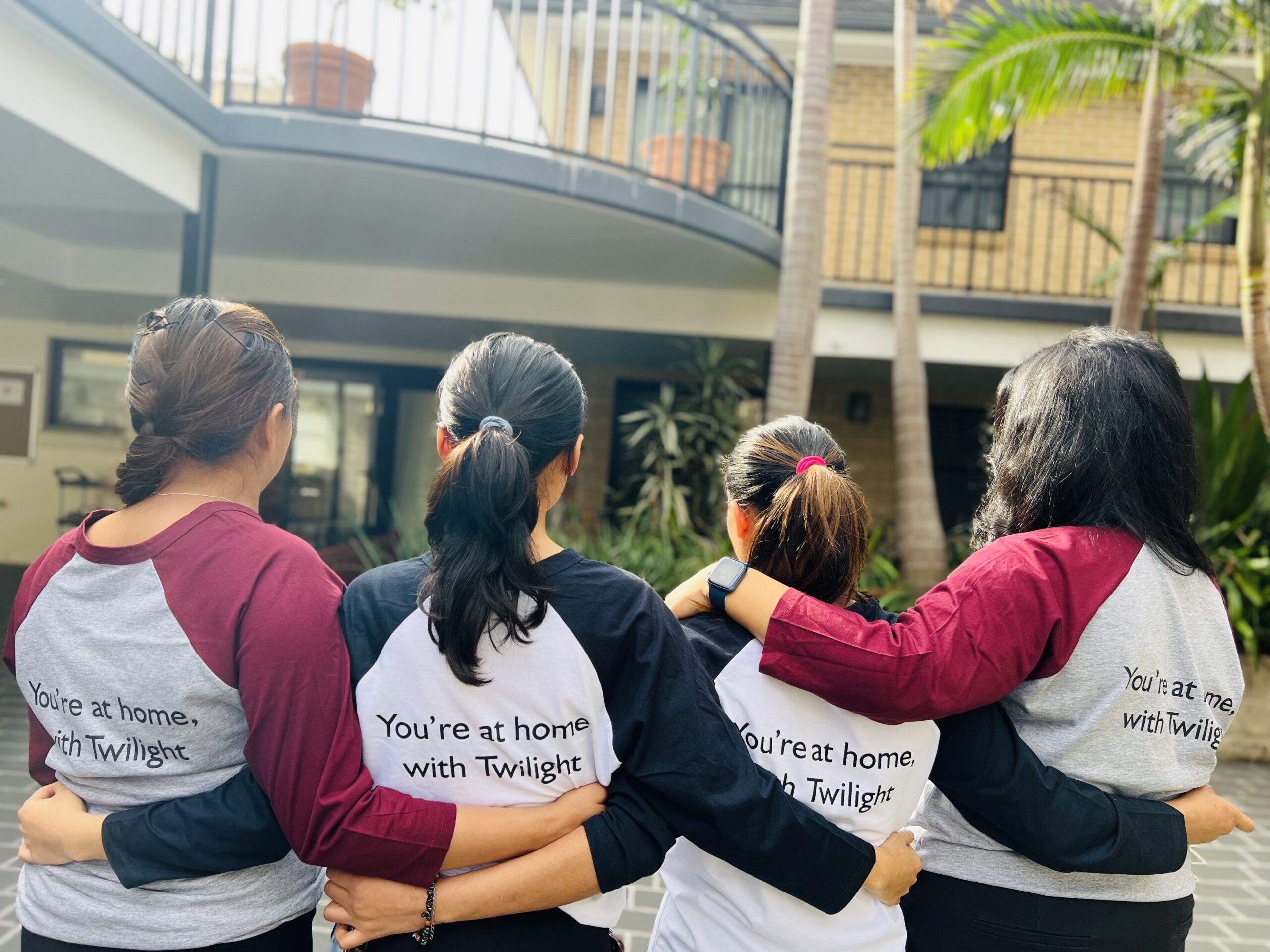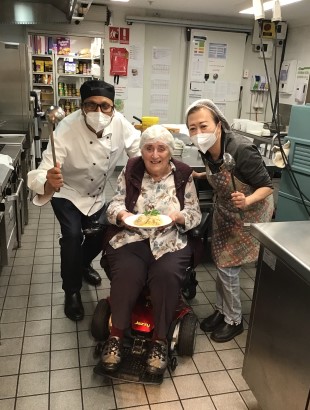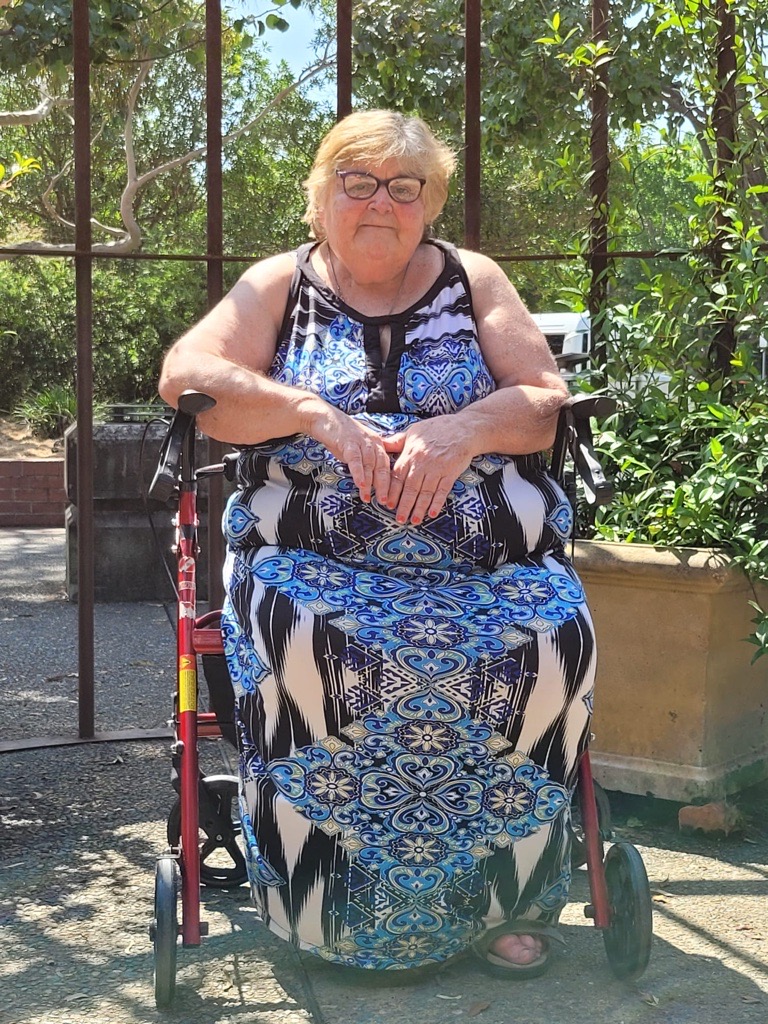From Our Twilight Family to you, Merry Christmas and Happy New Year
FROM OUR TWILIGHT FAMILY TO YOU, MERRY CHRISTMAS AND HAPPY NEW YEAR ‘Twas two weeks before Christmas, and through the Twilight homes, our teams worked like elves to give our residents, their families, and friends the best and brightest Christmas parties possible. Thank you to everyone who worked so hard to make these beautiful events…
Twilight Dementia Specialist Appointed to International Caregivers Association Advisory Board For People Living with Dementia And Their Partners In Care
TWILIGHT DEMENTIA SPECIALIST APPOINTED TO INTERNATIONAL CAREGIVERS ASSOCIATION ADVISORY BOARD FOR PEOPLE LIVING WITH DEMENTIA AND THEIR PARTNERS IN CARE. Our own Twilight dementia specialist Leah Bisiani (RN1 / MHlthSc / DipBus / Dementia and Aged Care consultant) has recently been appointed to join the prestigious International Caregivers Association Advisory Board “I feel very privileged and honoured…
a ”Twilight Moment” – Sharing Life Stories
A “TWILIGHT MOMENT” – SHARING LIFE STORIES One of the things that makes Twilight unique is our Family Model of Care. This involves getting to know the life story of each of our residents so that we understand their individual needs, preferences, and passions, connect with them on a different level, and support them to feel…
a ”Twilight Moment” – Celebrating Milestone Birthday
A “TWILIGHT MOMENT” – CELEBRATING MILESTONE BIRTHDAY Our Hunters Hill Village community recently enjoyed this milestone celebration with a special resident and her family. What a beautiful day for a party, and what a privilege to share this wonderful occasion
a “Twilight Moment” – RUOK Day? 2023
A “TWILIGHT MOMENT” – RUOK? day 2023 Today September 14 is RUOK? Day, our national day of action dedicated to reminding everyone that any day is the day to ask, ‘Are you OK?’ and support those struggling with life. Our Twilight Family came together to share cupcakes and some conversation and have a bit of…
a ”Twilight Moment” – Christmas in July
A “TWILIGHT MOMENT” – CHRISTMAS IN JULY You’d never guess the weather outside Glengarry was blue skies and balmy as residents celebrated Christmas in July with snowflakes, karaoke carols, and proper Christmas tucker. Thanks to the daughter of one of our residents, this special day delighted and brought together Twilight staff, residents, and family members…
September is Dementia Awareness Month
SEPTEMBER IS DEMENTIA AWARENESS MONTH 18 – 24 SEPTEMBER 2023 Dementia Action Week 2023 is from Monday 18 September to Sunday 24 September, with World Alzheimer’s Day occurring on Thursday 21 September. This year’s theme is Act Now for a Dementia-Friendly Future. Since 2019, the focus of the Dementia Action Week campaign has been to reduce…
a ”Twilight Moment” – Family Matters
A “TWILIGHT MOMENT” – FAMILY MATTERS There are so many beautiful moments that happen every day in our homes, we’d like to start sharing some of them. When residents come to live with us at Twilight, it’s more than “coming into care”. They are starting life in a new home and truly becoming part of…
Twilight welcomes Lady of the Grace, Now Grace Gardens to the Family
TWILIGHT WELCOMES LADY OF GRACE, NOW GRACE GARDENS, TO THE FAMILY! In April 2023, well-known Dural residential care home Lady of Grace changed hands, and operations were assumed by Twilight Aged Care. Some words from Neil Wendt, our Twilight CEO: “For Twilight, Lady of Grace is a very nice fit as we specialise in small…
Aged Care Employees Day 2023
AGED CARE EMPLOYEES DAY 2023 “I’m so proud of how giving and kind our Twilight staff are. Their focus is always on ensuring our residents feel at home.” Neil Wendt, Twilight CEO. On Monday August 7, 2023, Twilight Aged Care honoured and celebrated our staff teams. With a gift and a staff luncheon, we said #thanksforcaring…
A ‘Masterchef Moment’ at Horton House
“FOOD BRINGS PEOPLE TOGETHER ON MANY DIFFERENT LEVELS. IT’S NOURISHMENT OF THE SOUL AND BODY; IT’S TRULY LOVE.” – GIADA DE LAURENTIIS Our Head Chef Rahul and Chef Connie welcomed Horton House resident Elaine into the kitchen in August. Elaine cooked up her favourite dish of Chicken Risotto. Rahul says “We organized a delightful cooking…
Getting to know Glades Bay Gardens Resident Liz Matthews and her Life Story
GETTING TO KNOW GLADES BAY GARDENS RESIDENT LIZ MATTHEWS AND HER LIFE STORY This week, we meet Glades Bay Gardens resident Liz Matthews to learn more about her life story from nurse to nanny and how she came to Glades Bay Gardens. “I always wanted to be a nanny. I got to be a nanny.”…
Would you like to know more about our homes?
Book a tour with us, we’d love to hear from you



